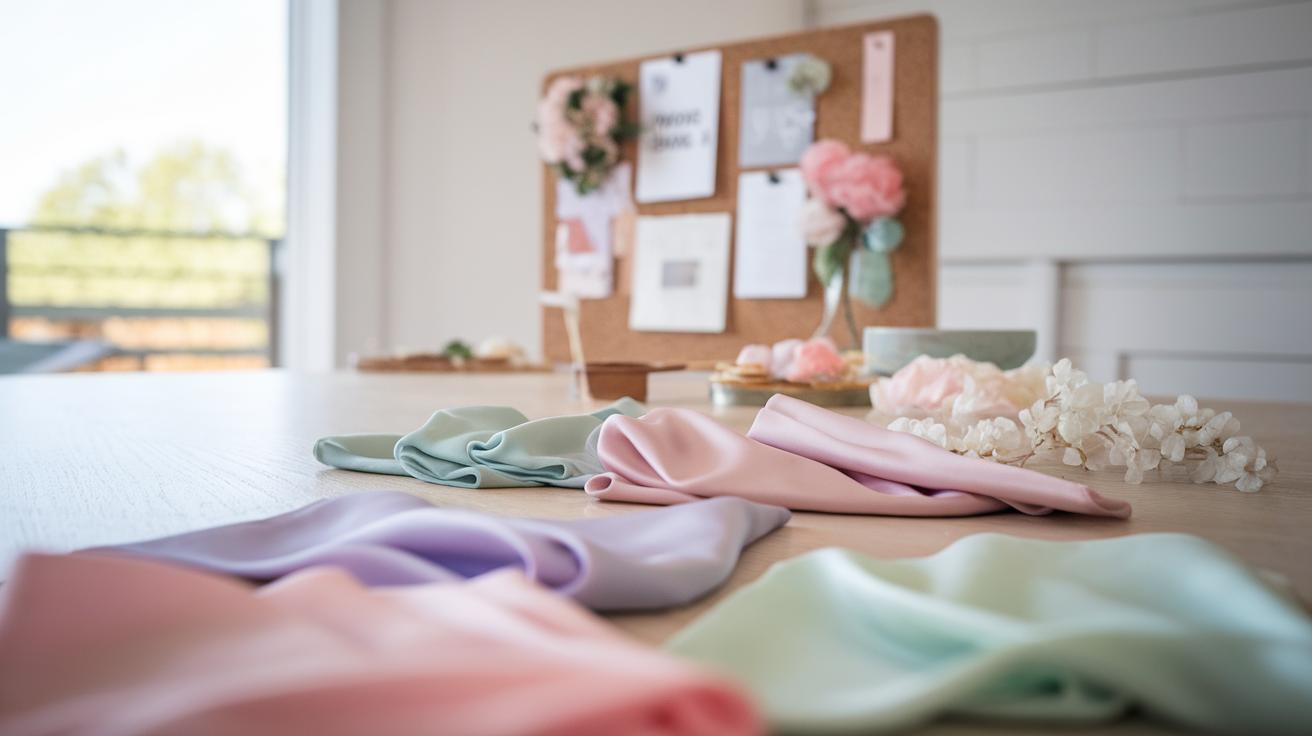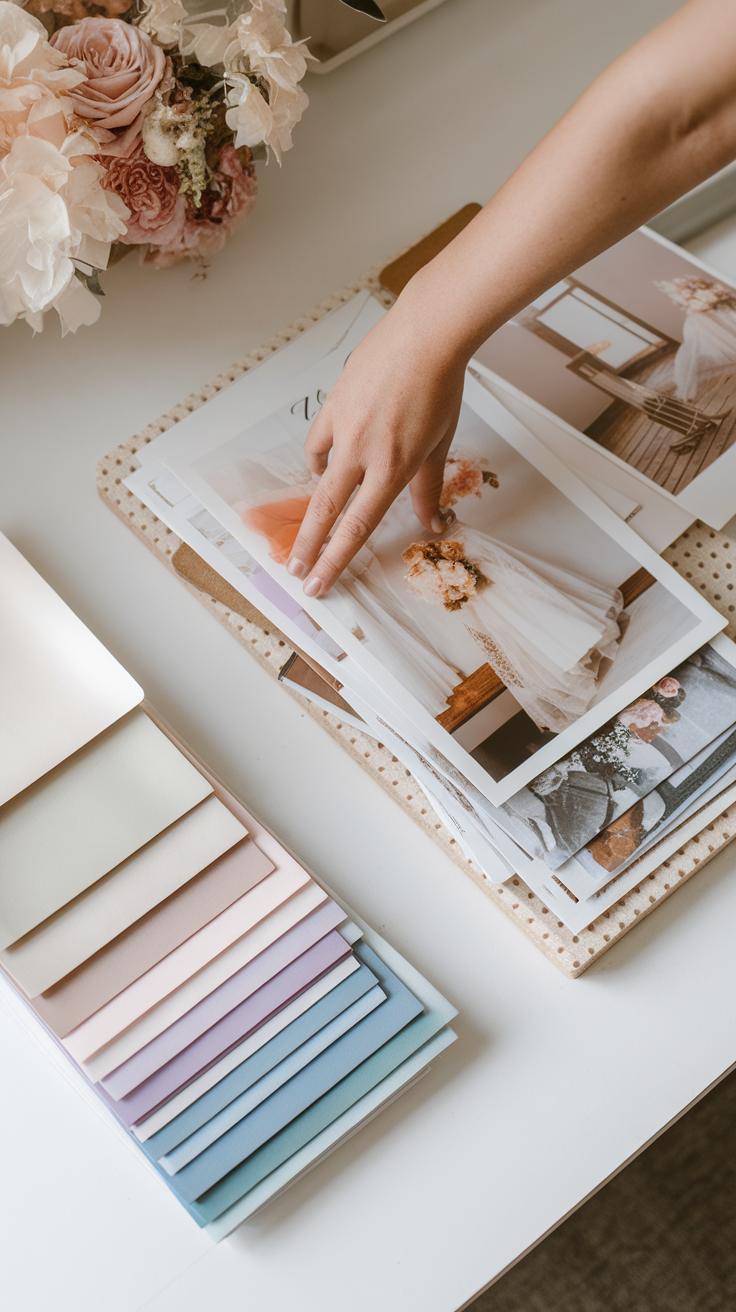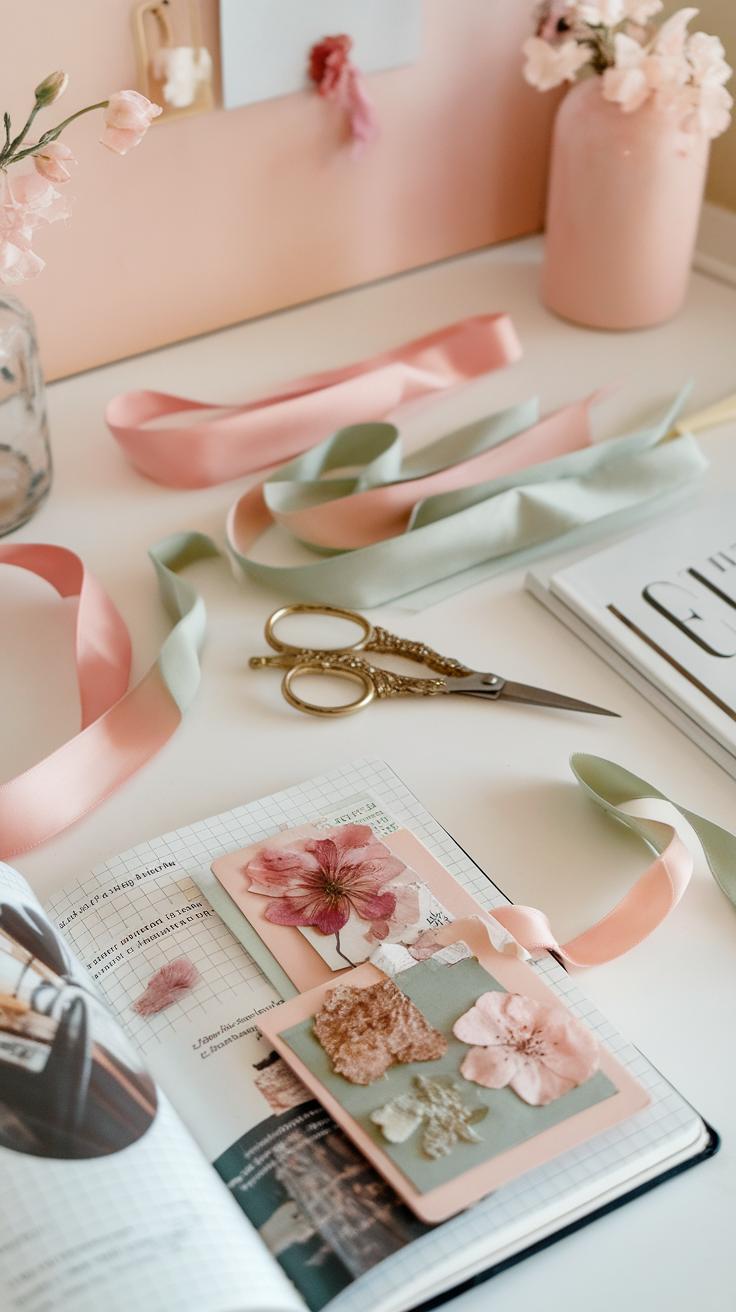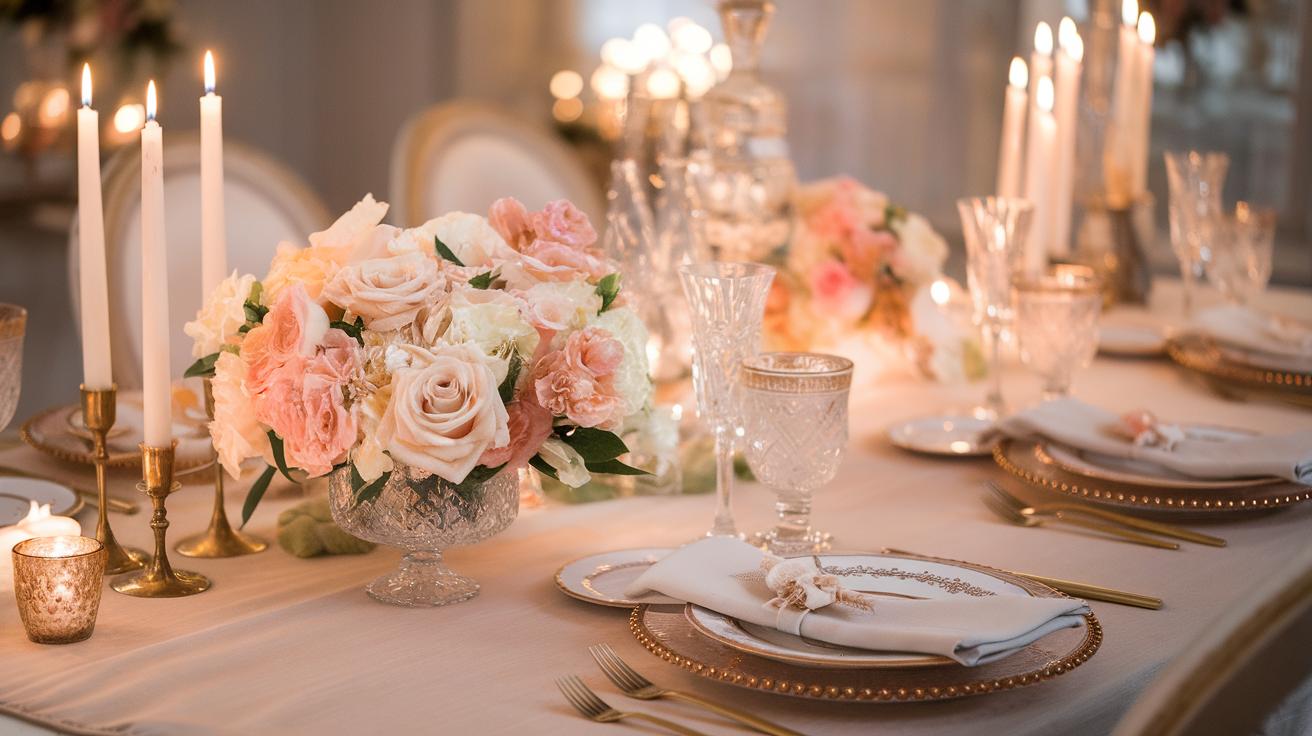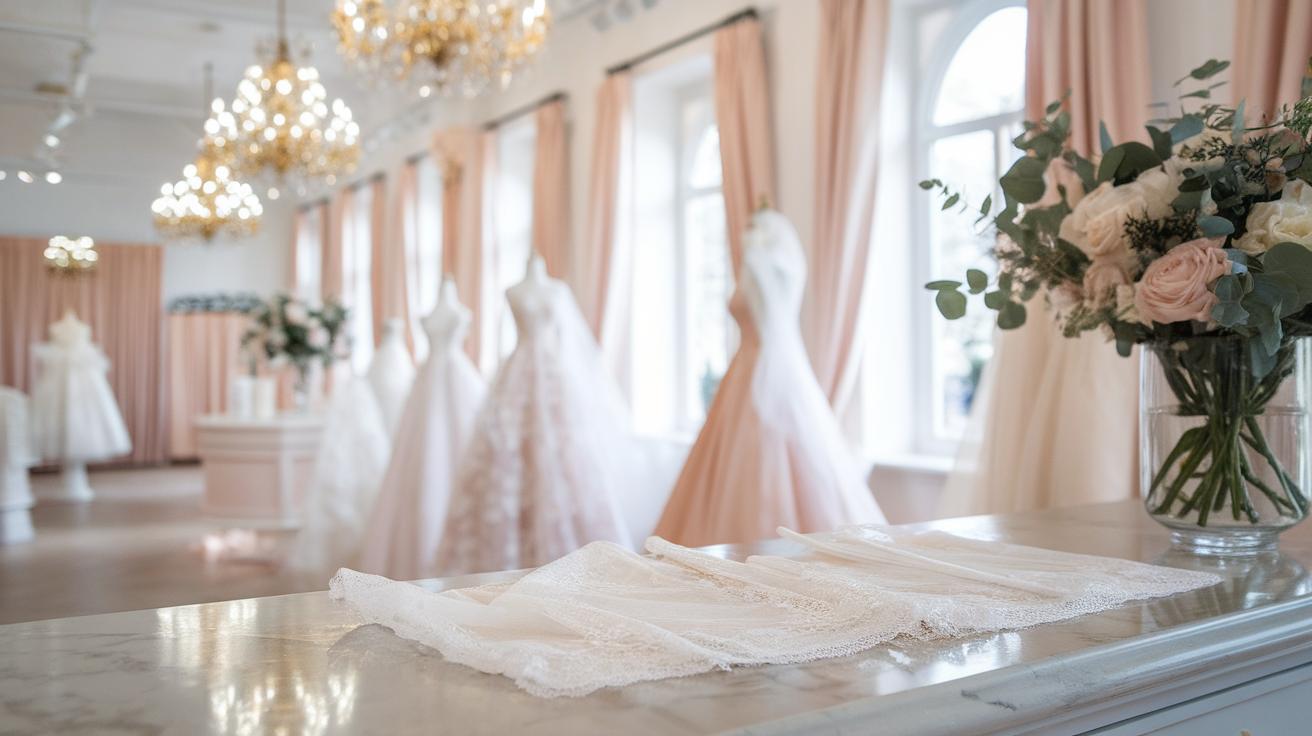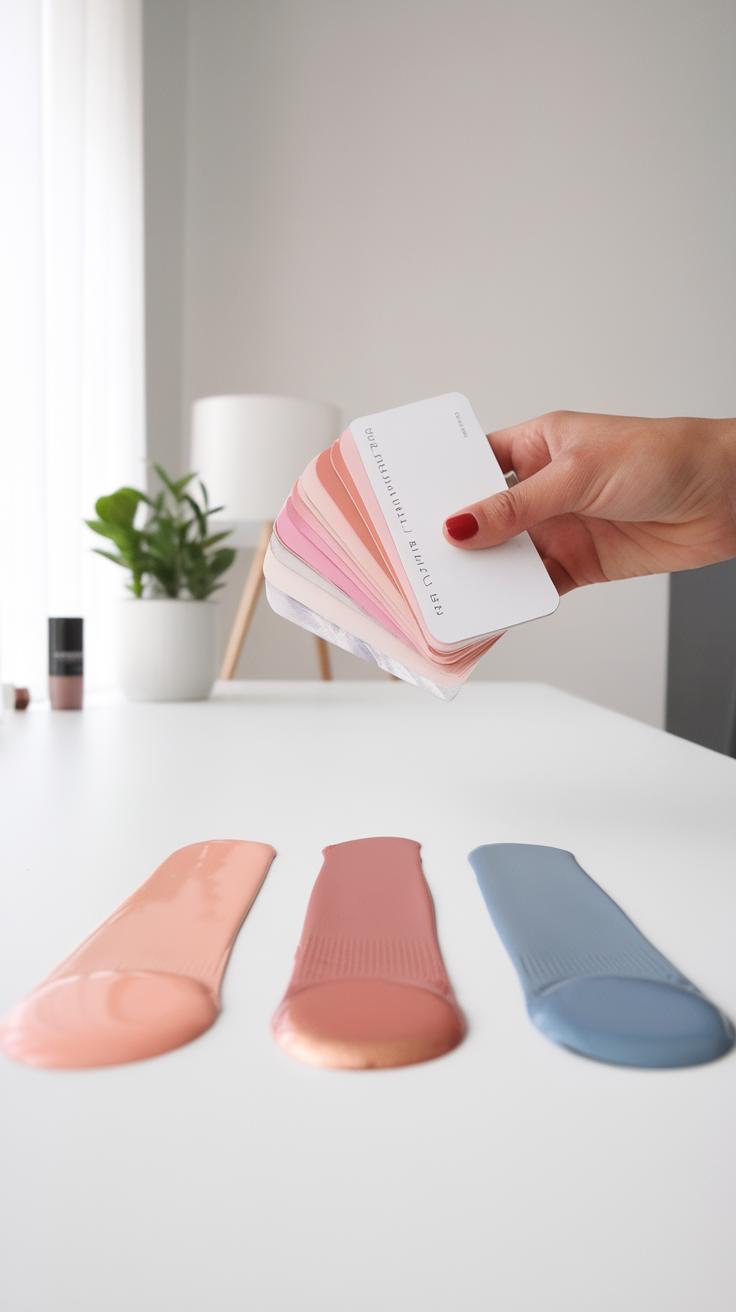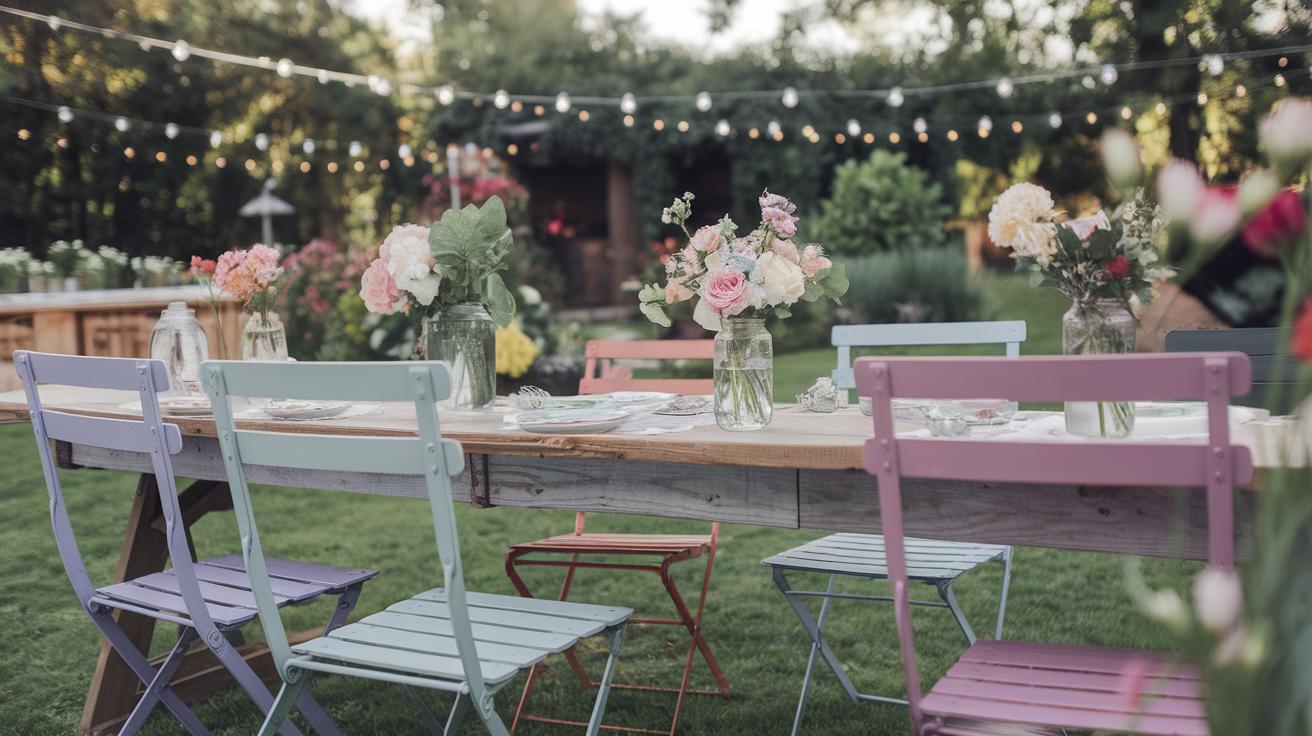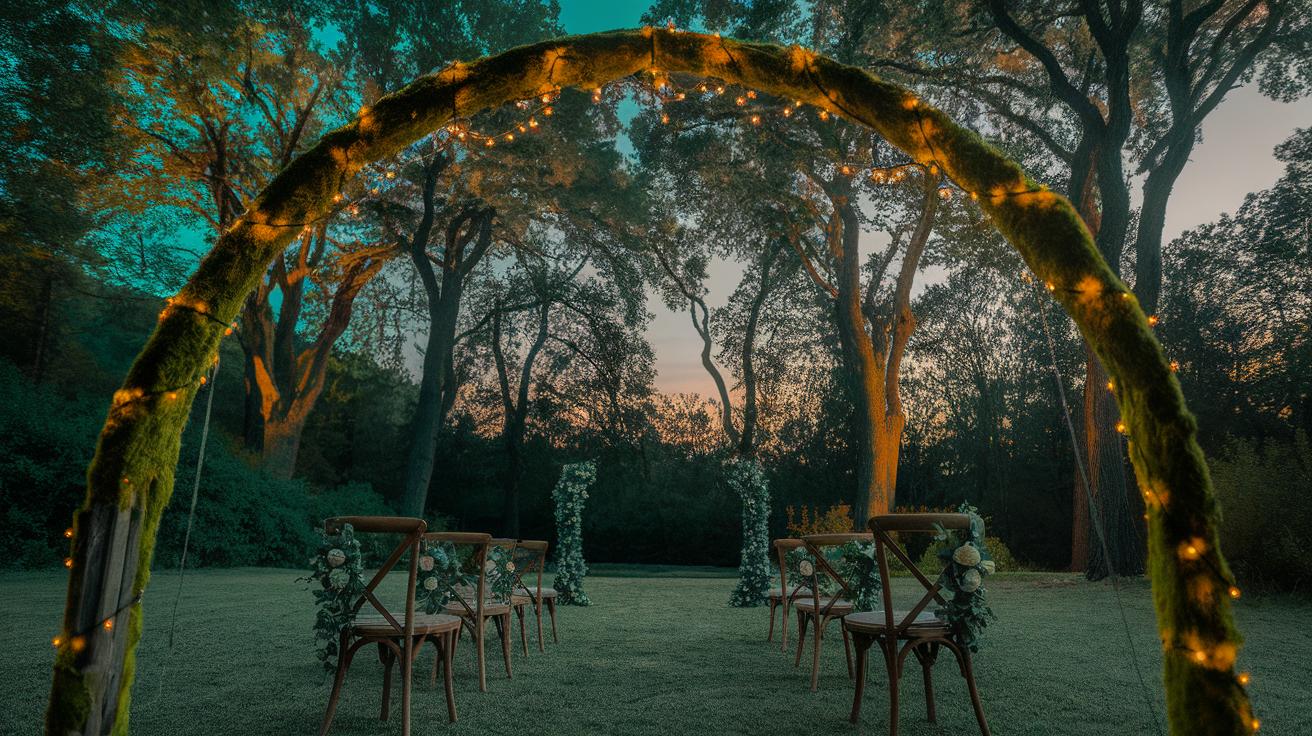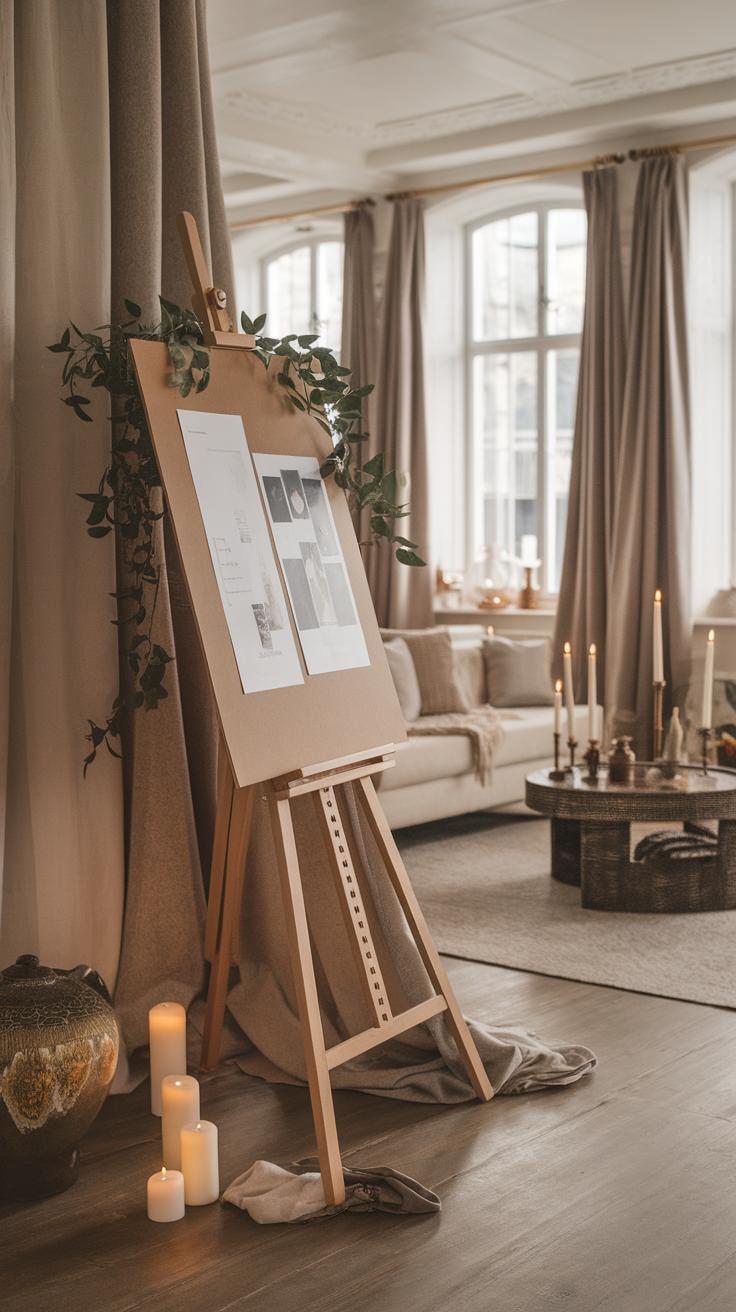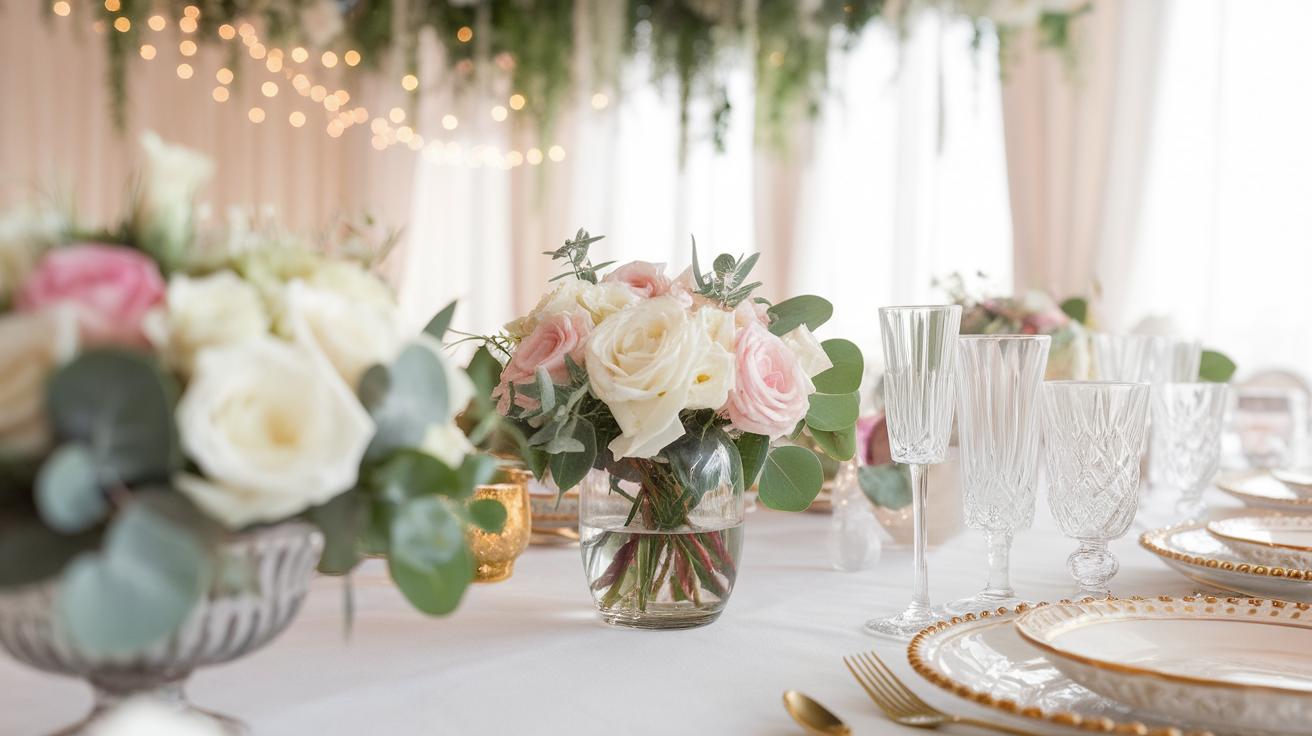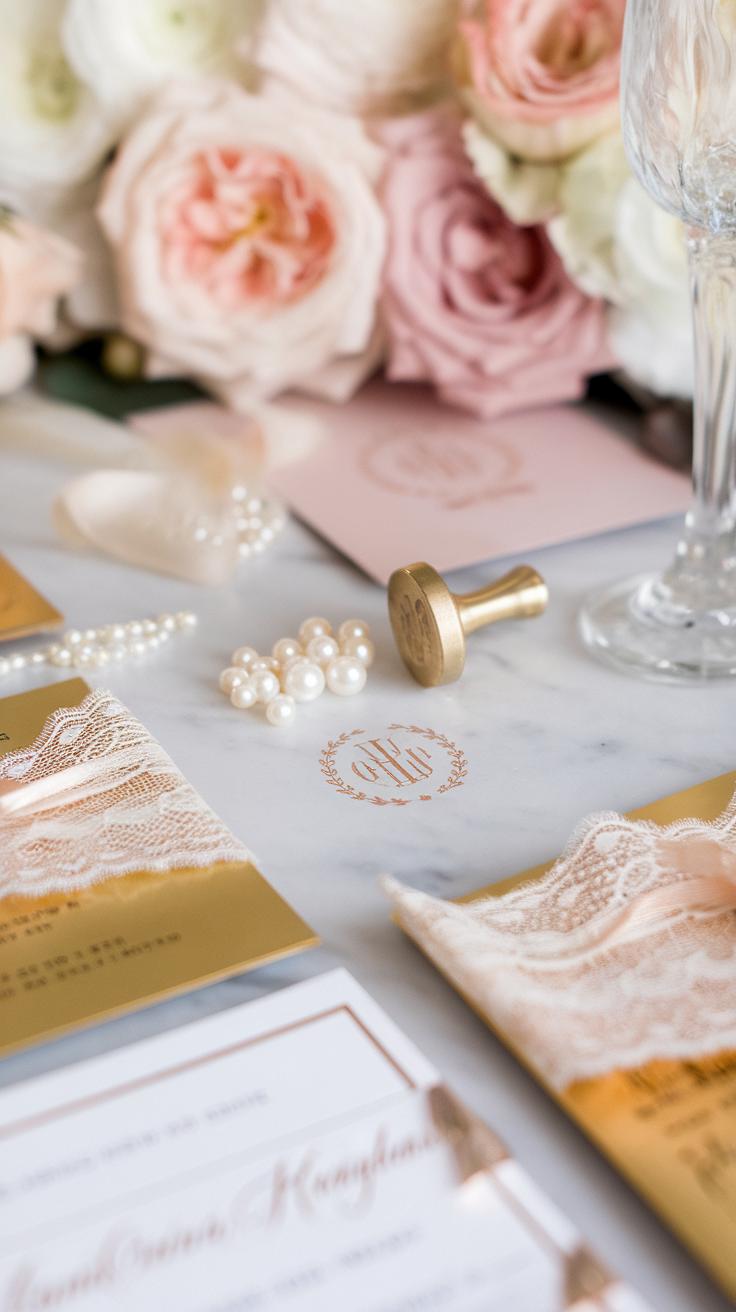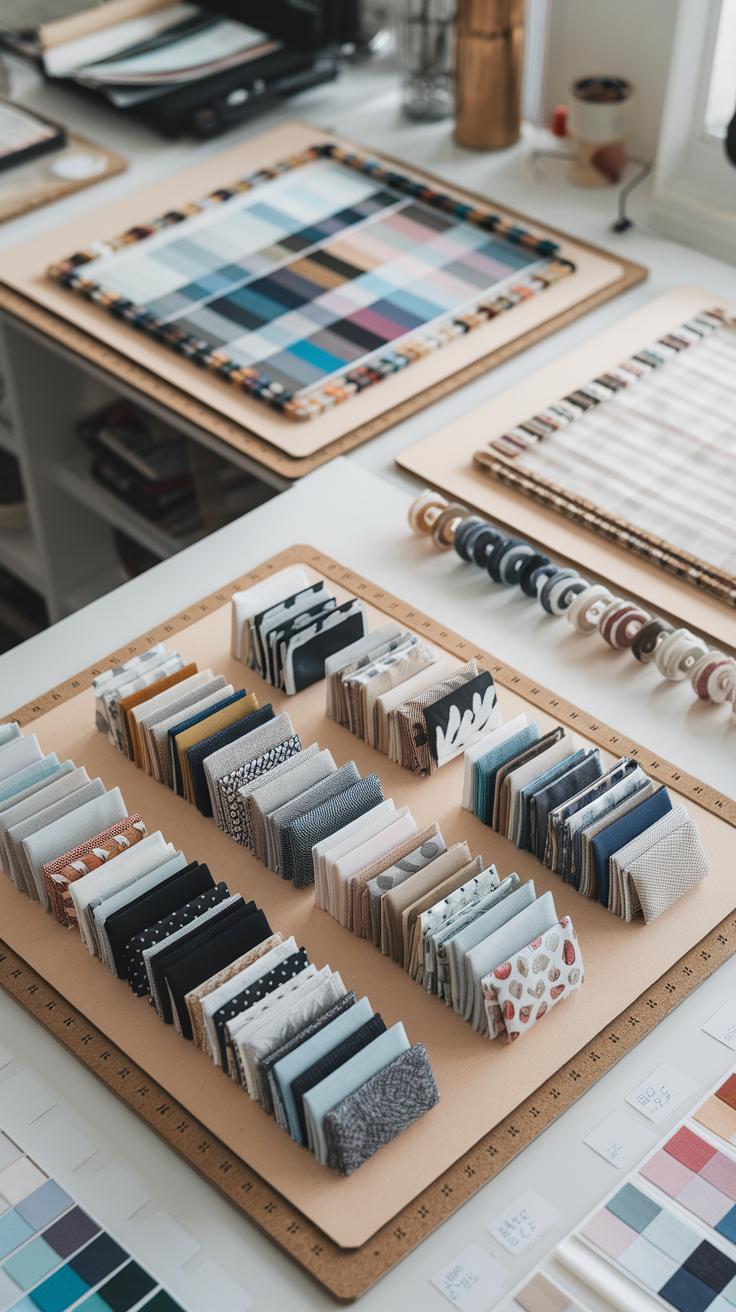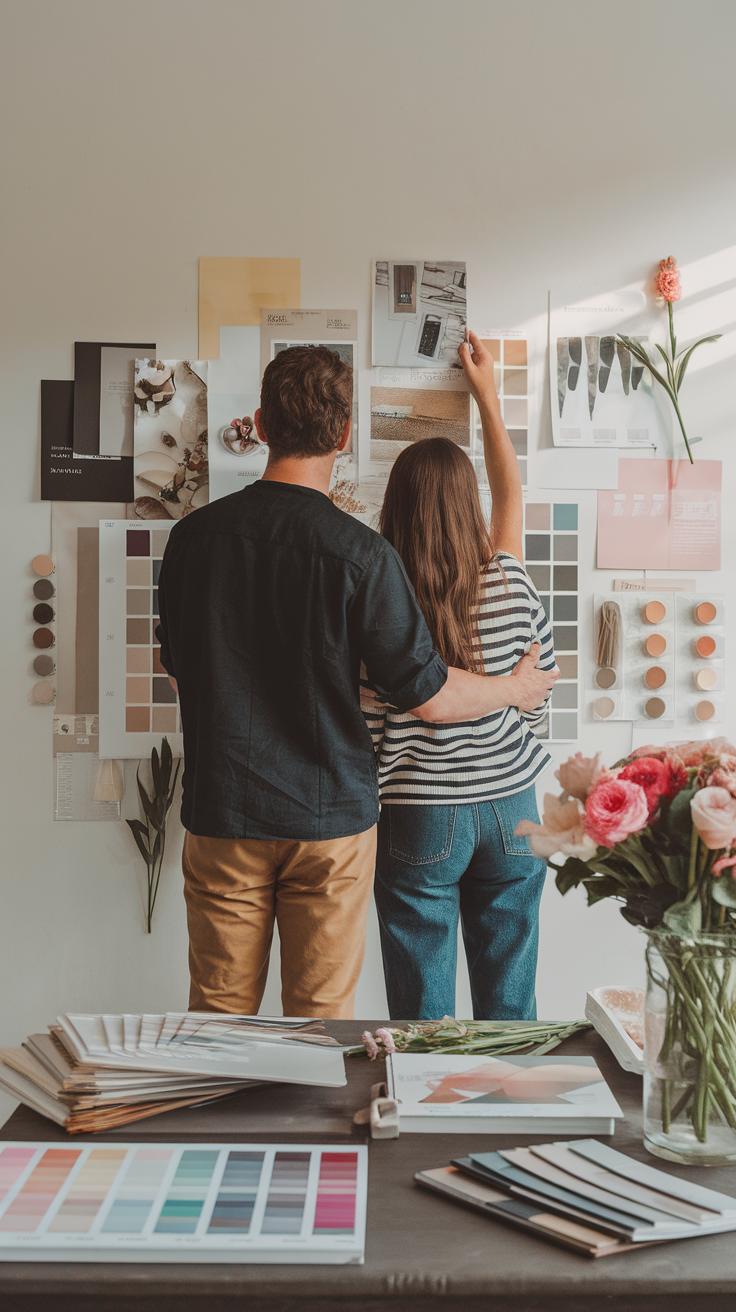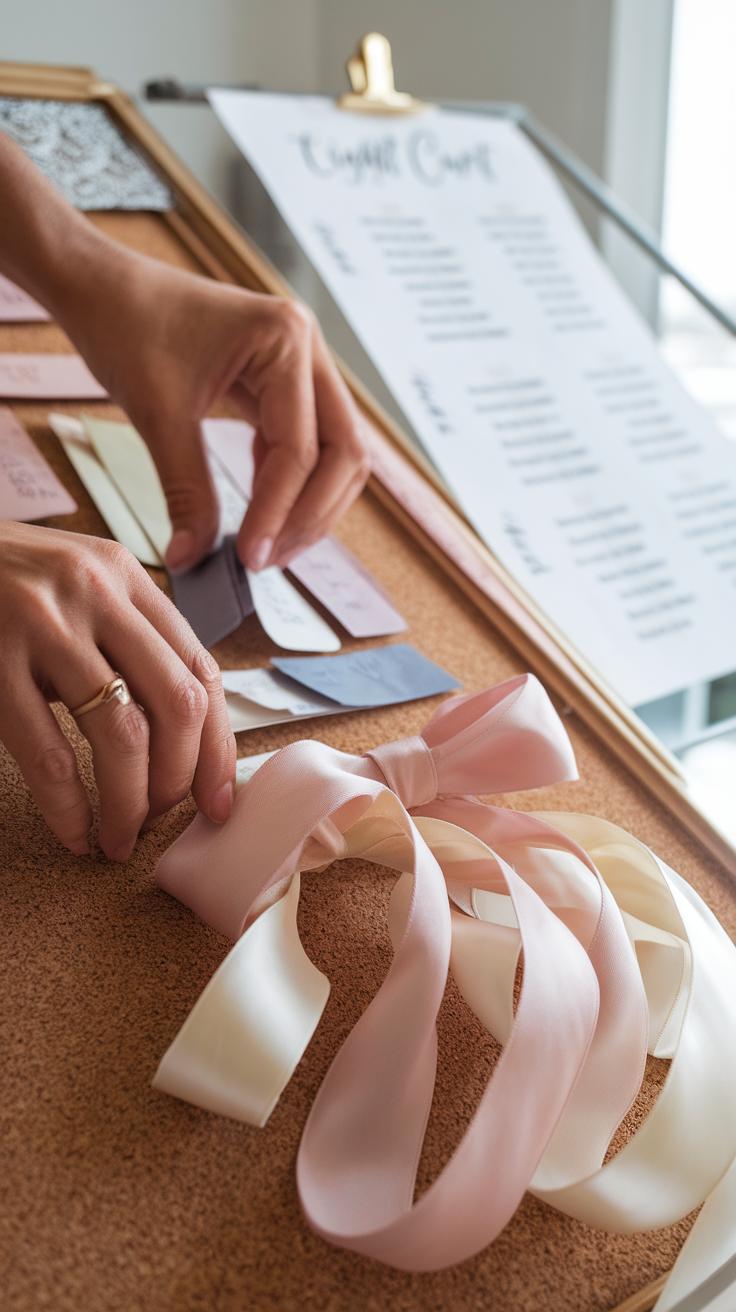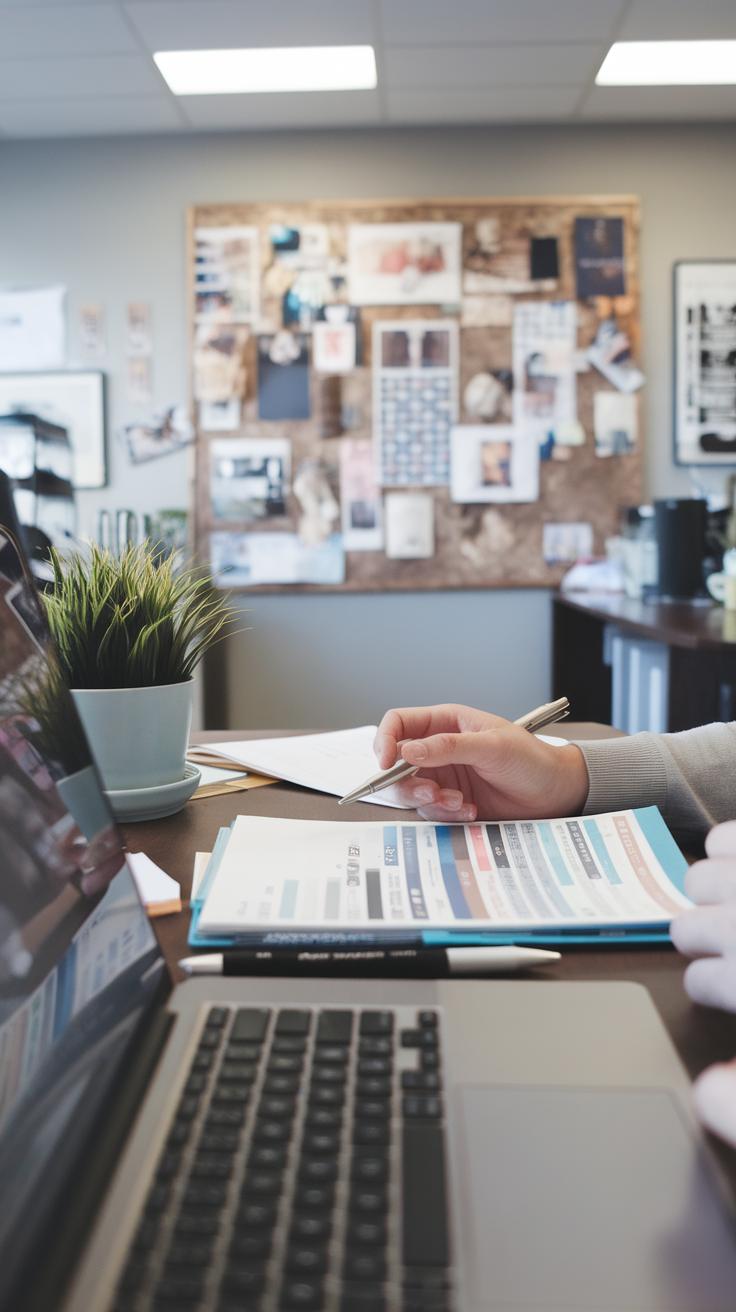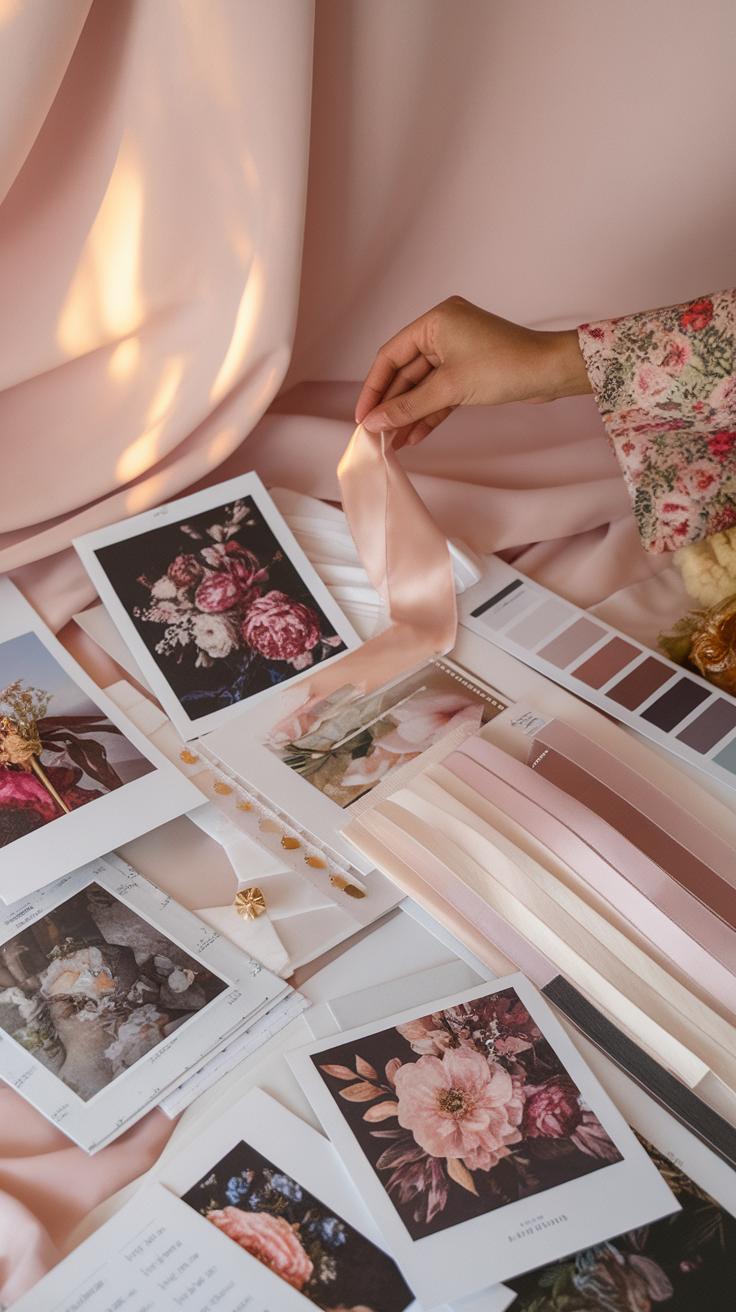Introduction
A wedding mood board serves as the foundation for designing your perfect wedding. It brings together colors, themes, and styles, offering a clear visual representation of your dream event. As you prepare for your big day, understanding how to create a mood board helps you organize ideas and communicate your vision with vendors and planners. Whether you are planning a large celebration or an intimate gathering, a well-crafted mood board sets the tone for every detail.
Starting a wedding mood board might feel challenging without proper guidance. It involves collecting images, fabrics, color palettes, and other elements that reflect your style and preferences. By using a mood board, you can make confident decisions while avoiding confusion later. This article will guide you through the essential steps to build a wedding mood board that aligns with your unique taste and ensures cohesion across all wedding components.
Understanding The Purpose Of A Wedding Mood Board
A wedding mood board is a visual tool that brings together all your ideas and preferences for your wedding day. It combines colors, themes, styles, and images to show a clear picture of how you want your wedding to look and feel. This helps you see how different elements work together before making final decisions.
You can include flowers, dresses, venue styles, and even table settings on your board. It helps you avoid random decisions and keeps your vision focused. When you have a mood board, it easier to explain your ideas to your partner, family, and vendors. It turns abstract thoughts into something tangible that everyone can understand.
Are you struggling to imagine your wedding’s overall feel? Creating a mood board allows you to play with colors and textures, helping you refine your taste and spot what truly fits your style. It saves time and reduces stress during planning by giving you a clear direction.
Why A Mood Board Matters
Using a mood board streamlines communication with your wedding vendors. When you show a picture or a color palette, your florist, caterer, and designer immediately understand your preferences. This avoids misunderstandings that could lead to costly errors.
It also keeps your planning organized. Instead of scattered notes or random pictures saved on your phone, everything stays in one place. You can easily track progress as you add new inspirations or adjust your style. This clarity reduces last-minute decisions and keeps your team on the same page.
Imagine having a tool that simplifies every conversation about your wedding look. Wouldn’t that make the planning process smoother? A mood board gives you control and confidence over your design choices.
Elements Included In A Mood Board
A wedding mood board usually contains several key parts. First, you will want to add photos that show dress styles, floral arrangements, or table decor. These images capture specific ideas you like.
Color palettes are essential. Choose a range of colors that will appear in your wedding—from soft pastels to bold hues. These colors guide your decisions on invitations, bridesmaids’ dresses, and decorations.
Including fabric swatches or texture samples can help you imagine how materials will look together. You might add lace, silk, or burlap pieces depending on your theme.
Don’t forget inspiration images. They might be artistic designs, nature scenes, or even wedding cakes that feel right for your event. Together, these elements form a visual summary of your vision, making it easier to plan and share.
Gathering Your Wedding Inspiration
Finding the right inspiration helps you build a mood board that truly reflects your wedding vision. Start by flipping through bridal magazines that highlight current trends and timeless ideas. Look closely at weddings featured in these publications to see how colors and themes come together.
Online platforms offer a vast pool of ideas. Search sites like Pinterest or Instagram using specific keywords related to your style or season. Watching real weddings online can give you fresh insights on décor, attire, and floral designs. What kinds of weddings catch your eye? Which details make you feel excited?
Combine what you find in print and online with examples from weddings you’ve attended or seen in person. Gathering inspiration from various sources creates a richer, more personalized mood board. Which styles or elements do you keep returning to? Start collecting those images and notes to guide your creative process.
Using Online Resources Effectively
Online tools let you easily collect and organize wedding ideas. Use Pinterest boards or digital folders to save photos, articles, and color swatches. Use clear, specific search terms like “rustic fall wedding” or “modern minimal wedding décor” instead of broad phrases.
Follow wedding bloggers and influencers who share real and styled shoots. Their commentary often highlights tips and trends that could inspire your decisions. Look for posts with detailed captions explaining color choices or décor setups. What details stand out to you?
Create separate boards for each wedding element—dress styles, floral arrangements, invitations—to keep your ideas focused. Don’t just copy but think about what aspects fit your personality and setting. How can the images you collect shape your wedding story?
Collecting Physical Samples
Adding tactile items to your mood board gives a concrete feel for your wedding’s look and vibe. Visit fabric stores to collect swatches of materials you like, such as lace, satin, or burlap. Feel how the textures match your vision.
Ask florists for small flower samples or photos of their arrangements. Pick ribbons, lace, or paper samples that complement your colors and theme. You might find a ribbon shade or paper texture that changes your overall plan.
Arrange these physical samples alongside your images to see how they work together. Do the fabrics feel right for your season? Do the flowers blend well with your other ideas? Handling these items can reveal new possibilities and help you make confident choices.
Selecting Your Color Palette
Your wedding mood board needs a color palette that feels right for the season and for you. Think about the time of year your wedding will take place. Soft pastels often suit spring, while deep reds and golds work for fall. Summer calls for bright and fresh tones, and winter favors cool blues and silver shades.
Reflect on your personal style and preferences. Do you lean toward bold contrasts or gentle blends? Your color choices should express who you are as a couple.
Choosing colors that sync with the season and your taste helps create a mood board that feels unified. Ask yourself: Which colors make me feel calm, excited, or joyful? These feelings will influence how your wedding will look and feel.
Choosing Colors That Match Your Theme
Consistency in color makes your wedding theme clear and balanced. Everything from invitations to table settings should share a common color story.
Pick colors that reinforce your wedding’s mood. For example, a rustic wedding pairs well with earthy shades like browns and greens. A modern wedding might call for sleek black, white, and metallic accents.
When you select colors that work together, your mood board will offer a glimpse of the experience you want to create. Consider the atmosphere you wish to build. What colors support that feeling? Staying consistent keeps your design simple and sharp.
Testing Color Combinations
Finding your perfect palette means testing colors side by side. Start by collecting paint chips or fabric swatches to see how colors look together in natural light.
Use digital tools, like color palette generators, which allow you to mix and match colors online. Upload images or enter hex codes to explore options quickly.
Try creating sample sets and compare how colors work with your inspiration pieces. Do colors clash or complement each other? Experiment until you feel confident.
Ask yourself: Will these colors look good across my decorations, flowers, and attire? Testing saves you from surprises later and ensures your mood board matches your wedding vision.
Deciding On Your Wedding Style And Theme
Choosing a wedding style means thinking about what feels right to you and matches where you plan to celebrate. Your personalities matter. Are you drawn to clean, sharp lines or cozy, natural touches? Think about the vibe that fits your story and the atmosphere you want on your big day.
Consider your setting too. A city loft suits a modern style with sleek decor. A countryside barn works well for rustic charm. Your wedding style should flow with your venue to create a whole experience.
Ask yourself what will make you feel most comfortable and excited as you plan. The style you pick will guide your choices and help your mood board capture exactly what you want.
Popular Wedding Styles Explained
Rustic weddings use natural wood, greenery, and earthy tones. They create a relaxed and homey feel. Modern weddings focus on simplicity, clean lines, and neutral colors. Think metal accents and minimal designs.
Vintage weddings bring in nostalgic elements, like lace, antique decor, and classic color schemes. They often feature romantic details. Beach weddings highlight light fabrics, sea-inspired colors, and casual layouts. Sand and ocean views set the tone.
Each style has clear traits. Knowing these helps you decide which fits your personality and vision best for your wedding mood board.
Matching Your Venue To Your Style
Your venue must fit the style to keep things consistent. If you want a modern wedding, look for a space with open rooms, lots of natural light, and simple architecture. A rustic style needs a venue with wood beams, stone walls, or outdoor space.
Choose a venue that makes decorating easier, not harder. A beach wedding should be at the shore or somewhere with a similar feel. Your mood board will look more polished when the venue naturally supports the theme.
Think about how the venue’s colors and textures work with your style. Will they highlight your chosen details? A well-matched venue turns ideas on a mood board into a lived experience for you and your guests.
Incorporating Key Wedding Details
Including key wedding details on your mood board helps create a complete picture of your celebration. Think about the flowers, decor, attire, and stationery as the building blocks that bring your vision to life. Each element should reflect your chosen style and theme from the previous step.
Start by selecting floral and decoration ideas that connect with your color palette. Consider the types of flowers, greenery, and centerpiece designs you like. Choose decor items like lighting, linens, and table settings that match the mood you want to create. Collect images, fabric swatches, and color samples to add texture and depth to your board.
Invite your invitations and attire visuals onto the board to link all wedding components clearly. Use photos of invitation designs, save-the-dates, or calligraphy samples alongside bridal gowns and groom’s attire images. This will help you see how every detail works together. Ask yourself if these pieces tell the same style story and support your theme. This approach makes your mood board a strong guide for planning and decision-making.
Selecting Floral And Decoration Ideas
Choosing flowers and decorations starts with your theme and color choices. Think about the setting of your wedding and what flowers grow well in that season. For example, if you want a rustic feel, wildflowers and greenery work well alongside wooden decor elements. For a classic look, roses and peonies with elegant candles and crystal hold more weight.
Gather images of arrangements that appeal to you. Notice their shapes, colors, and textures. Decide if you want bold, bright flowers or soft, neutral tones. Look at table runners, chair decorations, and altar pieces for ideas. Consider how these items will blend with your venue and overall style. Can you picture these flowers and decor in the space? This process helps prevent confusion later.
Integrating Invitations And Attire
Adding invitation designs and attire images ensures your wedding looks coordinated. Choose invitation styles that echo your theme—whether minimalist, vintage, or modern. Pay attention to color, font, and paper texture. Place these samples close to decorations and floral choices to check for harmony.
Include photos of bridal dresses, bridesmaids’ gowns, and groom’s suits on your board. Look for colors and cuts that match the mood and season. For instance, a flowy, boho dress pairs better with wildflower bouquets than a structured ball gown does. Comparing these elements side by side helps avoid clashes and confirms your style direction.
How do your invitations and attire reflect your personality and theme? Use your mood board to answer this question and confirm your vision holds together through every element.
Organizing Your Mood Board Layout
Arranging your mood board elements clearly helps you see your wedding vision come to life. Whether you use a physical board or a digital platform, group similar items together. For example, place florals near color swatches and fabrics close to dress ideas. This helps your eye move naturally across the board.
Keep some white space between sections to avoid clutter. Overcrowding can distract you from the details that matter most. Also, try to keep your board balanced, spreading out bold images with softer textures or colors. This prevents any one part from feeling too heavy.
If working on a physical board, lay out your items without fixing them first. Move things until you find a good flow. For digital boards, use grids or frames to organize images. Consider how others will view your board—does it tell your story clearly?
Creating A Balanced Physical Board
Start by choosing a sturdy base like foam core or corkboard. This supports your materials and lets you rearrange pieces easily. Use push pins or double-sided tape to attach items without damage. Keep heavier samples, like fabric swatches, near the bottom to prevent sagging.
Mix textures and sizes. Place larger photos or fabric scraps in the center, surrounding them with smaller accent images. This creates a natural focal point. Pin similar items close together so you can compare colors and styles at a glance.
Label sections with small notes if helpful. This keeps ideas clear when you revisit the board later or share it with others. Ask yourself: does my board invite me to explore every element?
Using Digital Tools For Mood Boards
Popular apps like Canva, Milanote, and Pinterest make creating mood boards simple. They let you drag and drop images from your computer or the web straight onto your board. Some platforms offer built-in templates and grids to keep your layout clean.
Digital boards make it easy to tweak and rearrange elements as your ideas evolve. You can add notes, links, or color codes for better organization. Sharing your board with your partner or vendors takes just a click, allowing quick feedback and collaboration.
When choosing a tool, consider whether you want mobile access, offline use, or the ability to export your board as a PDF or image. What features will help your vision come through most clearly?
Collaborating With Your Partner And Vendors
Sharing Your Vision
Creating your wedding mood board together helps you and your partner stay on the same page. When both of you add ideas, colors, and styles that matter, your board becomes a true reflection of your shared vision. This process encourages conversation about preferences and priorities. You might find common favorites or discover new inspirations through open dialogue. Ask each other what feelings or themes you want your wedding to convey. Keep updating the board until you both feel it accurately represents your dream day. This shared effort avoids misunderstandings later and builds excitement for your wedding. Your mood board becomes more than images; it is a practical plan that you create as a team.
Presenting To Vendors
Use your mood board as a clear guide when talking with vendors. Share it early on so they understand the style, colors, and overall mood you want to achieve. This helps avoid vague instructions or last-minute surprises. Provide your florist, caterer, photographer, and others with access to the board, either digitally or in print. Ask vendors for their input based on what you’ve shared and how they can best bring your vision to life. Show specific images or notes that highlight must-have elements. Discuss how each component fits into your overall plan. This communication saves time and makes collaboration smoother, helping vendors deliver what you expect.
Updating And Refining Your Mood Board
Reviewing Progress And Changes
Your wedding mood board is a living document. As you make choices and learn more about what works, reviewing it regularly keeps your vision clear. Are your colors still reflecting how you feel? Has your budget shifted, needing you to reconsider certain elements? Taking time to reassess helps you spot gaps or conflicts early.
You might find that certain styles no longer fit or that new ideas excite you more. For example, if you originally wanted a formal setup but start leaning toward a casual vibe, your mood board should reflect that change. That way, every decision stays connected to what truly matters to you both.
Set simple checkpoints—perhaps monthly—to go over your mood board with your partner. Ask yourself if it still feels right and if it fits your financial limits. This keeps your plans realistic and your vision real.
Keeping The Mood Board Relevant
When new ideas come up, add them thoughtfully so your mood board grows without losing focus. Avoid making big changes all at once. Instead, swap one or two pieces at a time and see how they mesh with the rest. For instance, if you discover a new flower you love, test it alongside your existing color palette before replacing anything else.
Keep asking yourself which parts of your board capture the feeling you want and which might distract from it. What stays valuable? What no longer fits?
Maintain balance by grouping related images, fabrics, or colors together. This visual cohesion helps you spot when changes support your vision or cause confusion. That way, your mood board remains a reliable guide that adapts as your wedding grows clearer without spinning off track.
Using Your Mood Board During The Wedding Planning
Your mood board acts as a central guide during the wedding preparation. It brings clarity when you face tough decisions by showing your chosen themes and styles in one place. When vendors or family ask for your preferences, you can quickly refer to your board and stay on track without second-guessing.
What if you find yourself overwhelmed by choices? Your mood board helps you focus on what matters most to your vision. It keeps your plans coordinated and helps you solve problems by reminding you of your original goals. Staying connected to your mood board reduces stress and creates confidence throughout the process.
Making Consistent Choices
You want every part of your wedding to feel like it belongs. Checking your mood board guides you in selecting dresses, decor, and vendors that fit your style. When you see a floral arrangement that almost matches but not quite, use the board to decide if it fits well with your overall look.
Imagine shopping for bridesmaid dresses. The mood board lets you compare colors and styles before buying. This stops last-minute mismatches and costly changes. Vendors, too, can create proposals that match your vision when you share the mood board with them. Consistent choices build harmony from start to finish.
Troubleshooting Design Challenges
Unexpected problems can pop up, like venue restrictions or unavailable items. Your mood board becomes a tool to find solutions instead of causing stress. If your first flower option is unavailable, check which tones or textures from the board can be swapped without changing the style.
For example, if your original lighting plan isn’t allowed, look at the mood board’s mood to find alternatives that create the same feeling. This approach helps you stay flexible while preserving your vision. When you use your mood board to troubleshoot, you avoid rushed decisions that don’t fit your plan.
Finalizing Your Wedding Mood Board For The Big Day
Completing your wedding mood board means bringing every detail into one clear picture. Look at colors, textures, and styles you chose and ask if they match your vision. Make sure each part—flowers, linens, lighting, invitations—fits the overall theme. Use your mood board as a checklist. Highlight which vendors or elements still need confirmation and which are locked in.
Compare your mood board against your budget and timeline to avoid last-minute surprises. Gather feedback from trusted friends or your planner to catch anything you missed. Once your board feels complete, organize it by category for easy reference.
Think of your mood board as the blueprint that guides every decision during the final phase. How does each detail support the look and feel you want? If something feels off, revise it now. A well-finished mood board keeps planning stress low and ensures your wedding day looks exactly as you imagined.
Confirming Wedding Details With Your Mood Board
Before the wedding, review every element alongside your mood board. Check that your dress, décor, and stationery colors align perfectly. Confirm floral arrangements match the samples on the board. Ask yourself if the lighting and table settings reflect your chosen palette and style.
Arrange meetings with vendors and share the mood board to ensure everyone understands your expectations. When the florist or caterer sees your board, they can deliver exactly what you want. Use it to resolve doubts or clarify any last-minute changes.
Reading through your mood board one last time helps prevent surprises. Does the cake design fit your theme? Are the music choices consistent with the mood you planned? This step helps you stay confident and focused as the big day approaches.
Using The Mood Board On Your Wedding Day
On your wedding day, your mood board becomes a practical tool for vendors and coordinators. Providing them with this visual reference ensures each setup matches your vision. They can follow color cues, placement ideas, and design details without guesswork.
If the lighting needs adjusting or flowers need arranging, vendors consult the board to keep things consistent. Your coordinator can use it to check that every area—ceremony space, reception tables, lounge corners—fits the plan.
Having a detailed mood board ready simplifies communication and guides swift decisions. When unexpected situations arise, the mood board helps the team stay on track with your style. How confident will you feel knowing your vision is right there in their hands?
Conclusions
Creating a wedding mood board is a practical way to organize your ideas and shape the overall feel of your wedding. It guides your choices on colors, decorations, attire, and even the venue style. Staying focused on the mood board ensures all elements work together harmoniously. This approach helps you avoid last-minute changes and clarifies conversations with wedding professionals.
A detailed wedding mood board reflects your personality and vision. It acts as a reference point throughout the planning process, making it easier to stay on track. By investing time early to build your mood board, you set yourself up for a smooth planning experience and a memorable wedding day that truly represents you.

